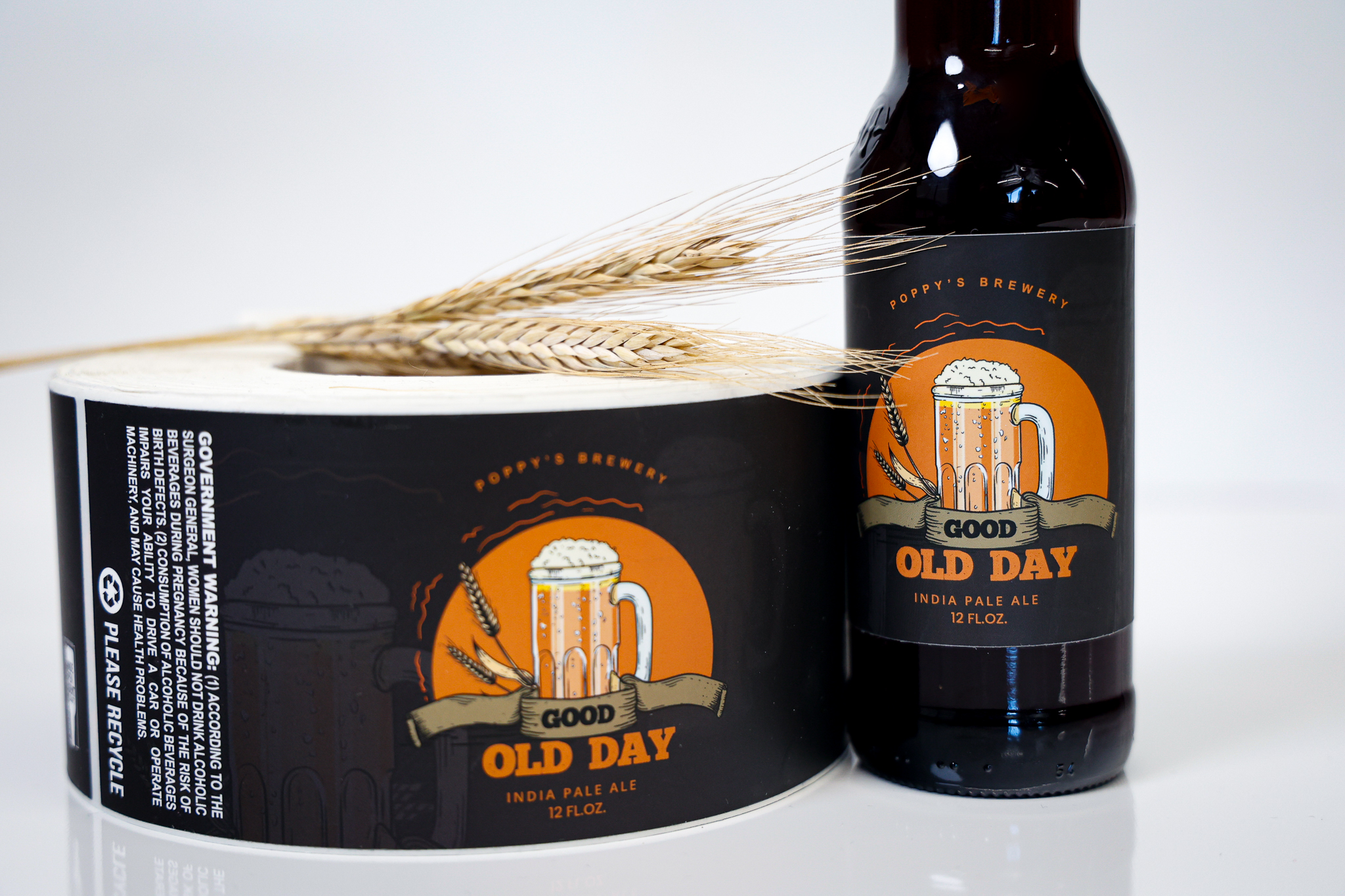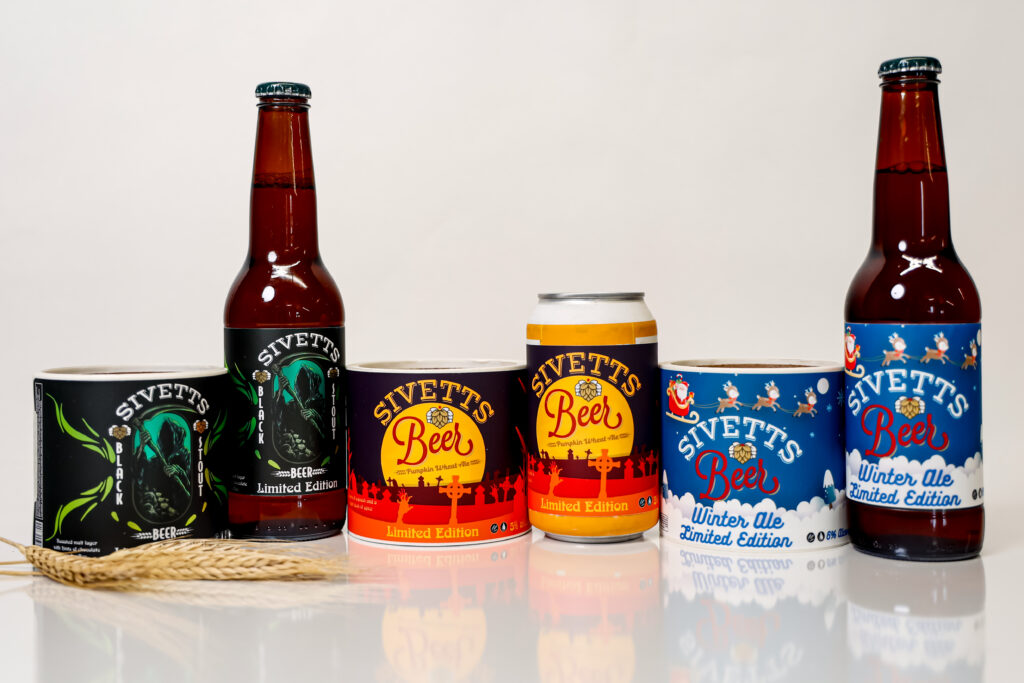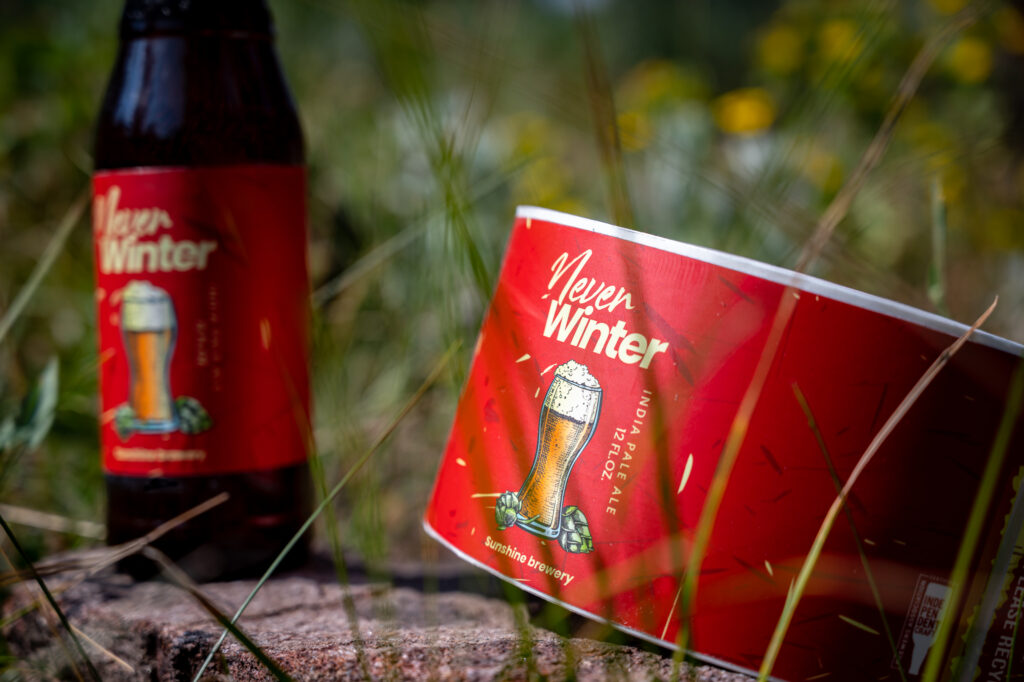What Needs to be on a Beer Label?
- By Robert Roland
- on
- in Labels

without a doubt, causing a demand for custom craft beer labels. So, make a great first impression on shoppers and start customizing your beer label today. First and foremost, there is one thing all beers have: they all have custom bottle labels with TTB regulations and the ALFD. TTB stands for Alcohol and Tobacco Tax and Trade Bureau, and ALFD is known as the Alcohol Labeling and Formulation Division. Your beer will not make it to market unless you have the correct beer bottle labels on your products.
Without a doubt, it can be confusing and stressful trying to figure out what goes on your beer labels.
That is why, in today’s blog, Sticker Mountain can help you better understand what information needs to be on your beer bottles and cans. Craft beers also need to follow the regulations as well. We will provide helpful information and links to make your custom beer labels nothing other than perfection.
Let’s “TAP” into some details!
Basic Content for Beer Can or Bottle labels

When we talk about basic labeling, we talk about what the consumer sees on the bottle or can. When they shop, the label is where they will find most of the information they want. It doesn’t matter if you’re a large industry brewery or a small craft brewery; all the same, specific information must be present on your beer labels. Here is what you need to include:
the brand of your company and then the name of that specific beer. Your brand name is the name under which your beverage will be sold.
have information on whether the beer is a lager, pale ale, or IPA, typically typed in a minimum size of 2mm tall for eight fluid ounces.
This is the percentage at the bottom of the can or bottle indicating the alcohol content volume, such as 7% ALC/VOL.
The following contents explain the volume of the contents, for example, 1 Pint.
A container can only print the volume in ounces if it is less than 16 fluid ounces; otherwise, it must be in pints.
must be included on the bottles or cans front, back, or side—a minimum of 2mm tall for containers more significant than eight fluid ounces.
undoubtedly help protect against liabilities.
Additions for Malt Beverages
for imported beverages only
it needs to be specified if it is a draft or a drought
this one is essential because it is critical to be transparent with the ingredients that are in your beer. Someone could be allergic to something in the ingredients and needs to be aware. Producing this type of disclosure only applies if your Malt beverage contains:
- Saccharin (a cancer-causing agent in animals)
- Sulfites (only if a single drink includes ten or more ppm, aka, parts per million; this statement is required.)
- FD&C Yellow #5 (artificial food color)
- Aspartame- contains Phenylalanine (artificial sweetener)
Specifying whether your beer is Lite, Low Carb, or Light.
- Suppose your craft beer label or beer labels specify that the beer is low-carb or lighter side. In that case, you will need to provide a Statement of Average Analysis or a Servings Facts Statement, which is the serving size with calories (malt beverages are usually 12 ounces), carbohydrates, proteins, and Fats in grams.
- You are only allowed to use low-carb or light on your beverage if it contains seven grams of carbs or less in a 12 fluid-ounce serving.
Additional Information for Beer Labels

In addition to all the information above, everyone still makes mistakes; a common one is using the abbreviation IPA by itself. IPA must be written in full “India Pale Ale” in the smallest required size elsewhere on the bottle or can. Abbreviation by itself will result in application rejection.
Along with other information on the warning labels, it is a must to include the government warning by the general surgeon warning pregnant women not to drink alcoholic beverages. The words “Government Warning” must appear in bold lettering to make sure they stand out from the rest of the lettering.
For more information on different types of malt beverages and their regulations, visit the TTB website.
Things Prohibited on Beer Labels
At this time, when your custom craft beer labels are designed and completed, it is time for the TTB to review your submission of your label design. While your design may be a thirst quencher to the consumer, it has a possibility of being rejected by the TTB. Here is a list of things that are not allowed on your custom beer label:
The statement includes carbohydrates, proteins, and Fats in grams based on a serving size of 12 ounces of a malt beverage.
suggests it’s endorsed or affiliated with private-public organizations, municipal, state, or foreign government, or any living individual with public prominence, furthermore, including a celebrity or company brand name, symbol, trademark, or logo. It should be noted that endorsements can be permitted with proper documentation and clearance.
Sticker Mountain's Got Your Back in Beer Label Printing
Sticker Mountain is number one for having a sense of community; your company is not just a list of orders and packages. We care and take pride in our customers; that’s why we ensure that every aspect of your branding meets the highest standards, not just in beer labels but all of our custom-printed industry labels. We will go to any length to ensure your custom beer labels are perfectly printed according to TTB regulations. Please visit the TTB website or contact our customer service representatives for more information!
Random fact of the day
Did you know that, according to the beer shipment data information, people over the age of 21 consumed 28.2 gallons of beer per person per year? That is the equivalent of 10 ounces per day or about one six-pack per week! Holy cow!
